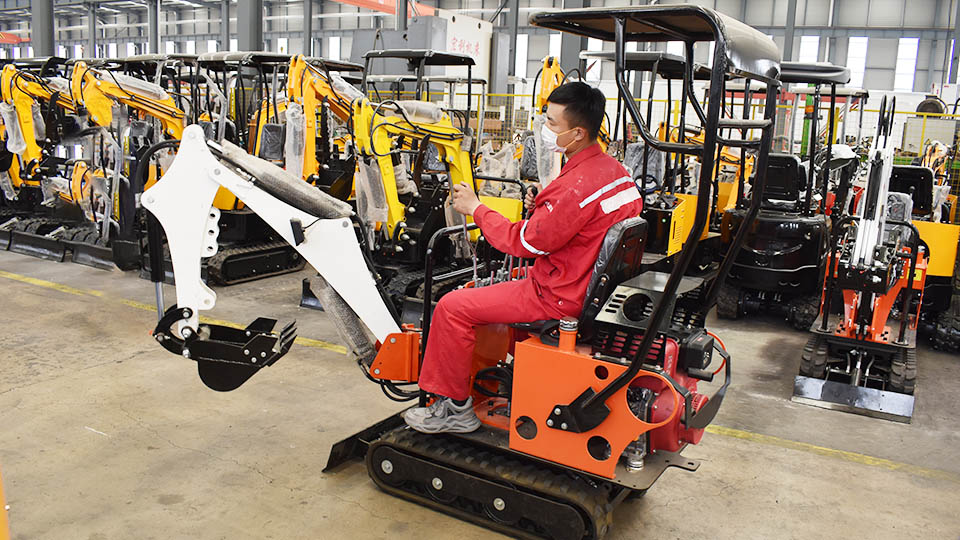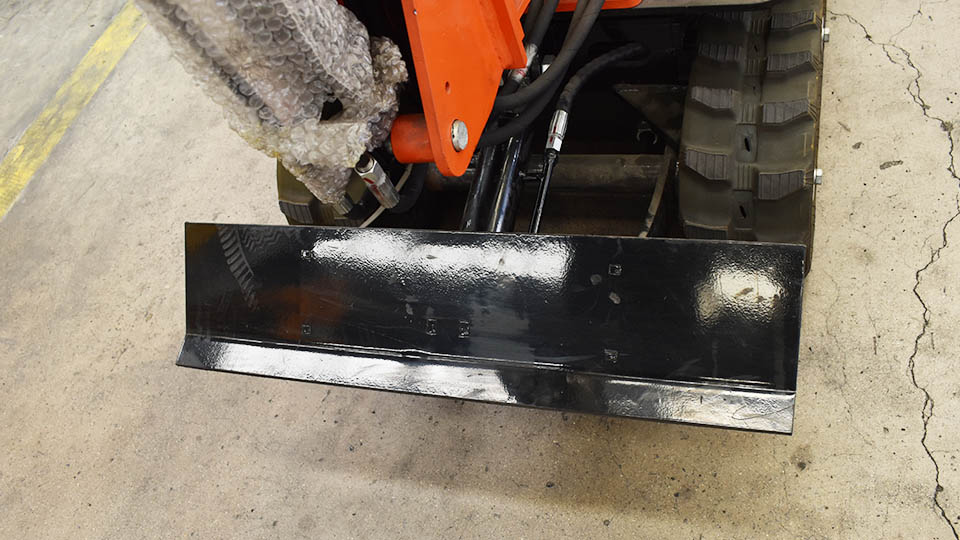Heavy-duty excavators and compact excavators represent two distinct yet overlapping categories within the broader spectrum of earth moving machinery. While both serve the fundamental purpose of excavation their design capabilities and optimal applications differ significantly primarily driven by their weight and the corresponding performance characteristics. Understanding the nuanced differences between these two classes is crucial for contractors project managers and equipment operators to select the most appropriate machine for a given task ensuring efficiency productivity and cost-effectiveness. This technical article provides a comprehensive breakdown of the weight and performance characteristics of heavy-duty and compact excavators highlighting their key distinctions and the factors that dictate their suitability for various job site requirements.
The primary differentiator between heavy-duty and compact excavators lies in their operating weight. Compact excavators often referred to as mini excavators typically range in weight from under one metric ton to around ten metric tons approximately two thousand to twenty-two thousand pounds. Heavy-duty excavators on the other hand generally start at around ten metric tons and can extend to massive machines weighing over one hundred metric tons or two hundred twenty thousand pounds. This substantial weight difference has cascading effects on virtually every aspect of their performance capabilities and operational considerations.

Weight and its Implications:
The weight of excavation companies near me is not merely a measure of its physical mass it directly influences several critical performance parameters:
Digging Force: Heavier excavators inherently possess greater stability allowing them to exert significantly higher breakout forces at the bucket teeth and arm. This increased digging power enables them to excavate harder materials such as dense clay tightly packed soil and even fractured rock with greater efficiency. Compact excavators while capable of tackling many soil types typically have lower breakout forces making them less effective for heavy excavation tasks.
Lifting Capacity: The counterweight and overall stability provided by the greater weight of heavy-duty excavators translate to significantly higher lifting capacities. They can lift and place heavier loads at greater reaches compared to their compact counterparts. This makes them indispensable for tasks involving the installation of large pipes precast concrete elements and other heavy materials. Compact excavators have limited lifting capacities and are generally suited for moving smaller loads.
Reach and Digging Depth: While design variations exist within each category heavier excavators often feature longer booms and arms contributing to greater reach and digging depth. This extended working envelope allows them to excavate deeper trenches reach over obstacles and load trucks more efficiently. Compact excavators typically have shorter booms and arms limiting their reach and digging depth which can be a constraint on certain projects.
Stability: The sheer mass of heavy-duty excavators provides superior stability particularly when digging at maximum reach swinging heavy loads or working on uneven terrain. This enhanced stability allows for more aggressive digging and safer lifting operations. Compact excavators due to their lighter weight are more susceptible to instability especially when operating at their maximum reach or lifting near their capacity.
Ground Pressure: Conversely the lighter weight of compact excavators results in lower ground pressure. This is a significant advantage when working on sensitive surfaces such as finished landscaping lawns or paved areas as it minimizes the risk of damage and rutting. Heavy-duty excavators with their higher weight exert considerably greater ground pressure potentially causing damage to delicate surfaces.
Transportation: The substantial weight difference between the two categories has a profound impact on transportation logistics. Compact excavators can often be transported on standard heavy-duty trailers pulled by appropriately rated trucks offering greater flexibility and lower transportation costs. Heavy-duty excavators necessitate specialized lowboy trailers and powerful towing vehicles often requiring permits and adherence to specific transportation regulations leading to significantly higher transportation expenses and logistical complexity.
Performance Breakdown by Category:
Heavy-Duty Excavators:
Optimal Applications: Large-scale excavation projects such as site development for commercial and industrial buildings road construction dam construction mining operations and heavy infrastructure projects. Their power and capacity make them well-suited for moving large volumes of earth and handling heavy materials.
Key Performance Advantages: High digging force exceptional lifting capacity extended reach and digging depth superior stability for demanding tasks.
Limitations: High initial cost high operating costs (including fuel and maintenance) significant transportation challenges and higher ground pressure potentially limiting their use on sensitive surfaces. Reduced maneuverability in confined spaces compared to compact excavators.
Compact Excavators:
Optimal Applications: Smaller-scale excavation tasks such as trenching for utilities landscaping projects residential construction demolition in confined spaces and working in areas with limited access. Their maneuverability and lower ground pressure make them ideal for these applications.
Key Performance Advantages: Excellent maneuverability in tight spaces ease of transportation lower ground pressure reduced operating costs compared to heavy-duty models versatility with a wide range of attachments.
Limitations: Lower digging force limited lifting capacity shorter reach and digging depth reduced stability for heavy lifting or demanding excavation tasks. Lower productivity for very large volume excavation projects.

Factors Influencing Selection:
The choice between a heavy-duty and a compact excavator hinges on a careful evaluation of several project-specific factors:
Project Scale and Volume of Excavation: For massive earthmoving projects requiring the excavation of large volumes of material heavy-duty excavators are generally the more efficient choice due to their higher productivity rates. Smaller projects with limited excavation volumes often benefit from the agility and lower operating costs of compact excavators.
Material Type and Hardness: Excavating hard or dense materials requires the high breakout forces offered by heavy-duty excavators. Compact excavators are better suited for softer soil and less demanding digging conditions.
Lifting Requirements: If the project involves significant lifting of heavy materials a heavy-duty excavator with its greater lifting capacity is essential. For tasks involving only occasional lifting of lighter objects a compact excavator may suffice.
Job Site Accessibility and Space Constraints: In confined urban environments residential areas or indoor demolition projects the compact dimensions and superior maneuverability of mini excavators are crucial. Heavy-duty excavators are often impractical in such settings.
Ground Conditions: Working on sensitive surfaces necessitates the use of compact excavators with their lower ground pressure to minimize damage. On robust construction sites ground pressure is less of a concern and the stability of a heavy-duty machine may be prioritized.
Transportation Logistics and Costs: The ease and cost of transporting the excavator to and from the job site are significant considerations. Compact excavators offer greater flexibility and lower transportation expenses.
Budget: The initial purchase or rental cost as well as the ongoing operating and maintenance costs differ significantly between heavy-duty and compact excavators. Project budgets play a crucial role in the selection process.
The Blurring Lines and Hybrid Solutions:
It is worth noting that the lines between heavy-duty and compact excavators can sometimes blur with manufacturers offering models that bridge the gap. For example some larger compact excavators in the eight to ten metric ton range offer increased power and reach while still retaining some of the maneuverability advantages of smaller machines. Additionally the development of hybrid and electric excavators is introducing new considerations related to weight power delivery and fuel efficiency within both categories.
Conclusion:
The choice between a heavy-duty and a compact excavator is a fundamental decision in project planning with significant implications for productivity cost and efficiency. The substantial weight difference between these two classes dictates their core performance characteristics influencing digging force lifting capacity reach stability ground pressure and transportation requirements. By carefully analyzing the specific demands of the job site including the scale of excavation material type lifting needs accessibility ground conditions and budget contractors can select the excavator that offers the optimal balance of weight and performance ensuring project success and maximizing return on investment. Understanding the distinct capabilities and limitations of both heavy-duty and compact excavators is essential for making informed equipment decisions in the diverse landscape of earth moving operations.
Post time:Sep-25-2020
